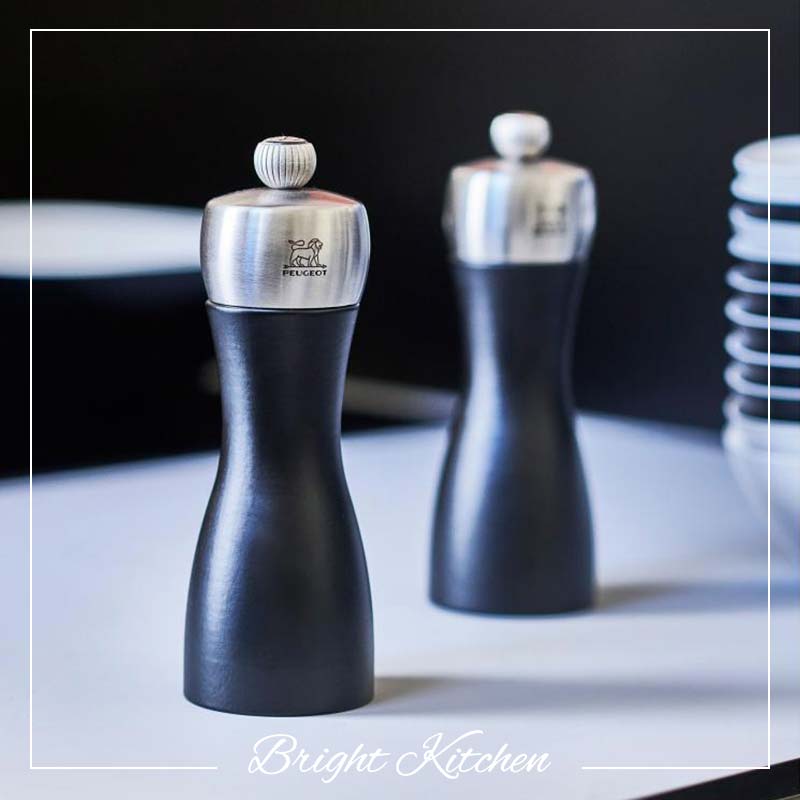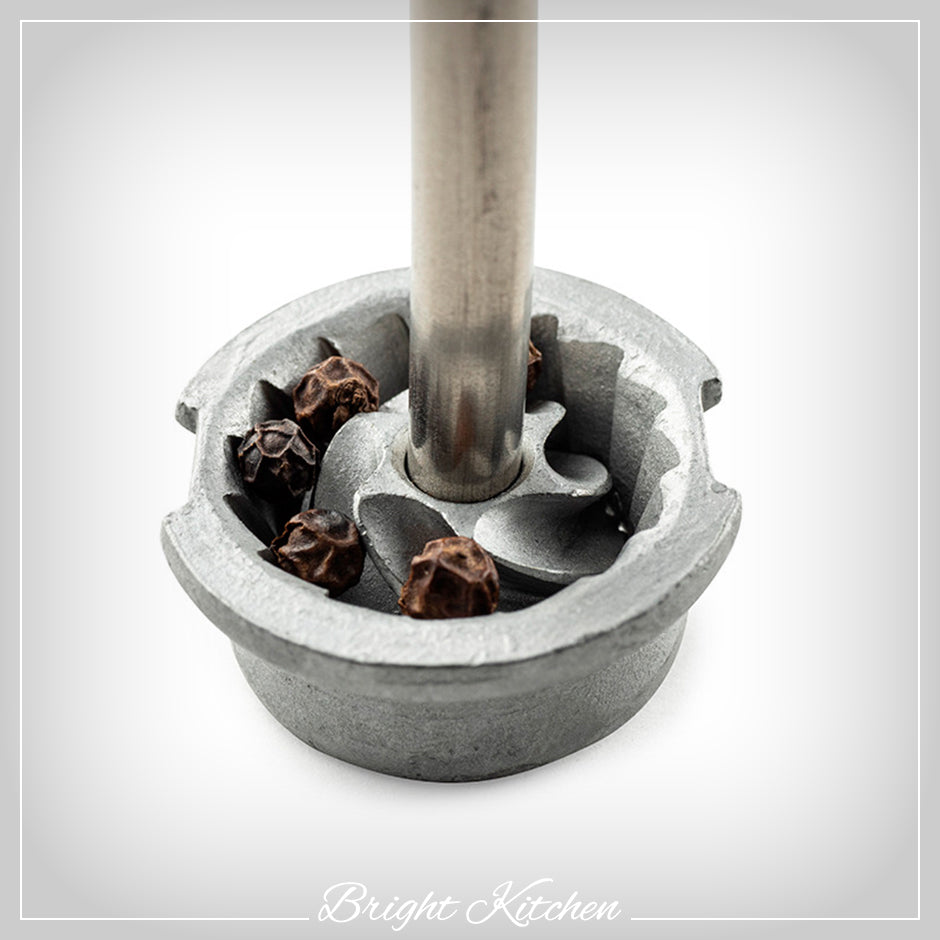Salt and pepper mills are modern, useful kitchen tools that can improve your culinary skills. They have evolved from common kitchen tools to sophisticated, stylish tools for the kitchen. They change a boring dish into one that is flavorful and becomes a mark of a good cook.
Therefore, we have prepared for you some tips and suggestions that will help you to choose the best salt and pepper mills.
How to choose a Salt and Pepper Mill Set
What to look for in a salt and pepper mill set is outlined as follows:
- Milling Mechanism: the majority of mills available are manual types. Since they don't contain any complicated electrical components, they are easier to use, more reliable, and last longer. On the other hand, electric mills handle the milling allowing you to focus on other cooking tasks.
- Size: this is often an overlooked concern. The exact size depends on how many people you usually cook for. A set of mills that is too small will require you to replenish them more frequently.
- Grain Size: a quality mill should include a variety of milling options so you can get the correct size of salt and pepper grains for your dishes.
- Material: most mills generally feature stainless steel and glass as the primary components since they are more durable and better suited to a modern kitchen design. However, if you want to go for a classic, natural look, wood is also an excellent choice.
Manual and Electric MIlls
There are two types of models:
- Manual Mills are the most common, because they are simple and practical, although they require little manual force to mill accurately. They are, however, excellent and long-lasting.
- Electric Mills are definitely simpler to manage press a button. They typically require batteries and are excellent for people who cannot perform the spinning motion. However, they are more vulnerable to damage.
As a result, the choice is highly influenced by the target purpose; electric models are less acceptable. However, they can greatly reduce milling time in high-production kitchens.
How it Works
Salt and pepper mills perform in a very useful way. We first place the entire pepper or coarse salt in a container that will hold and store them before and after use.
Then we turn the lever, which is typically located on top of the mill. When you turn the handle, a "shaft" secured between the lever and the mill spins with it, causing the mill to spin at the same time. Coarse salt or whole peppercorns, which we place inside the container, pass through the mill.
The grains then pass through the mill, being crushed, flaked, broken, or refined, by simply spinning the mill in either a clockwise or counterclockwise direction. How thick the grain will be when milling depends on the distance between the mills. You may change the grain size on salt and pepper mills by using the adjustment mechanism on the top or bottom.
Shaft and Mill Material
There are typically 3 different types of materials available for the central shaft: aluminum, iron, or stainless steel. Stainless steel is a better option if you want a salt and pepper mill that is durable. Although the iron shaft is durable as well, it rusts fast. Aluminum shafts will cost less and be less durable than stainless steel ones.
There are three different types of materials available for mills: ceramic, carbon steel, and plastic. Although carbon steel is the most resilient material, it is not appropriate for milling rock salt because it is not only more expensive than the ceramic mill. The best performance for milling multiple materials is provided by the ceramic mill, which may be used for both coarse salt and peppercorns.
Mill Structure Material
The structure of salt and pepper mills can be made of a variety of materials, which greatly affects the product's quality. Look:
- Stainless Steel: it is more resilient and does not rust, but you must proceed cautiously when using it with salt.
- Acrylic: are ideal to use in pepper mills that also mill salt because they won't corrode. They also make it easier to visualize the interior material.
- Wood: It is a rustic material that is great for decor and protects the grains from sunshine. They must be protected from moisture and damage, though.
Although glass and a combination of materials are still used in some models, these are the most typical ones. Many even have acrylic structure to keep track of the amount of content.
Difference between Pepper and Salt Mills
Not all pepper mills can mill salt, as this greatly depends on the materials used in their manufacturing. Because salt has a tendency to corrode some materials over time.
In this situation, models made of acrylic, ABS plastic, or those in which salt does not come into touch with stainless steel are suitable if you are looking for something versatile. Additionally, as was already mentioned, the interior serration for milling must be composed of ceramic.
However, there are apparently even more useful ones with two compartments—one for salt and the other for pepper—available. In this case, they are useful to have at home because the grain compartment is smaller and frequently needs to be replaced.
Grain Size
For those who want to leave the perfect milling according to their preference, a mill with milling regulation is preferable. This gives the option of selecting a coarser or finer grain. If you want this feature, though, you should proceed cautiously because not everyone has this option.
In general, the adjustment is very easy, just adjust the mill according to the manufacturer's instructions and there are 3 types of milling:
- “fine” milling – ideal for blending purées, meals, or delicious gourmet sauces.
- “medium” milling – a good all-purpose salt or pepper for fish and other seafood. Additionally, it is beneficial for thick soups and naturally, meat.
- “coarse” milling – ideal for "rich meats" and thick sauces, which improve the texture of the meat.
Design and Ergonomics
The pepper and salt mills can also be decorative, therefore design is another requirement while choosing. But above all, it must be practical and useful.
Choose mills with an ergonomic design that are simple to handle and turn. They are ideal for usage in this situation with more comfort according to their anatomical formats.

















